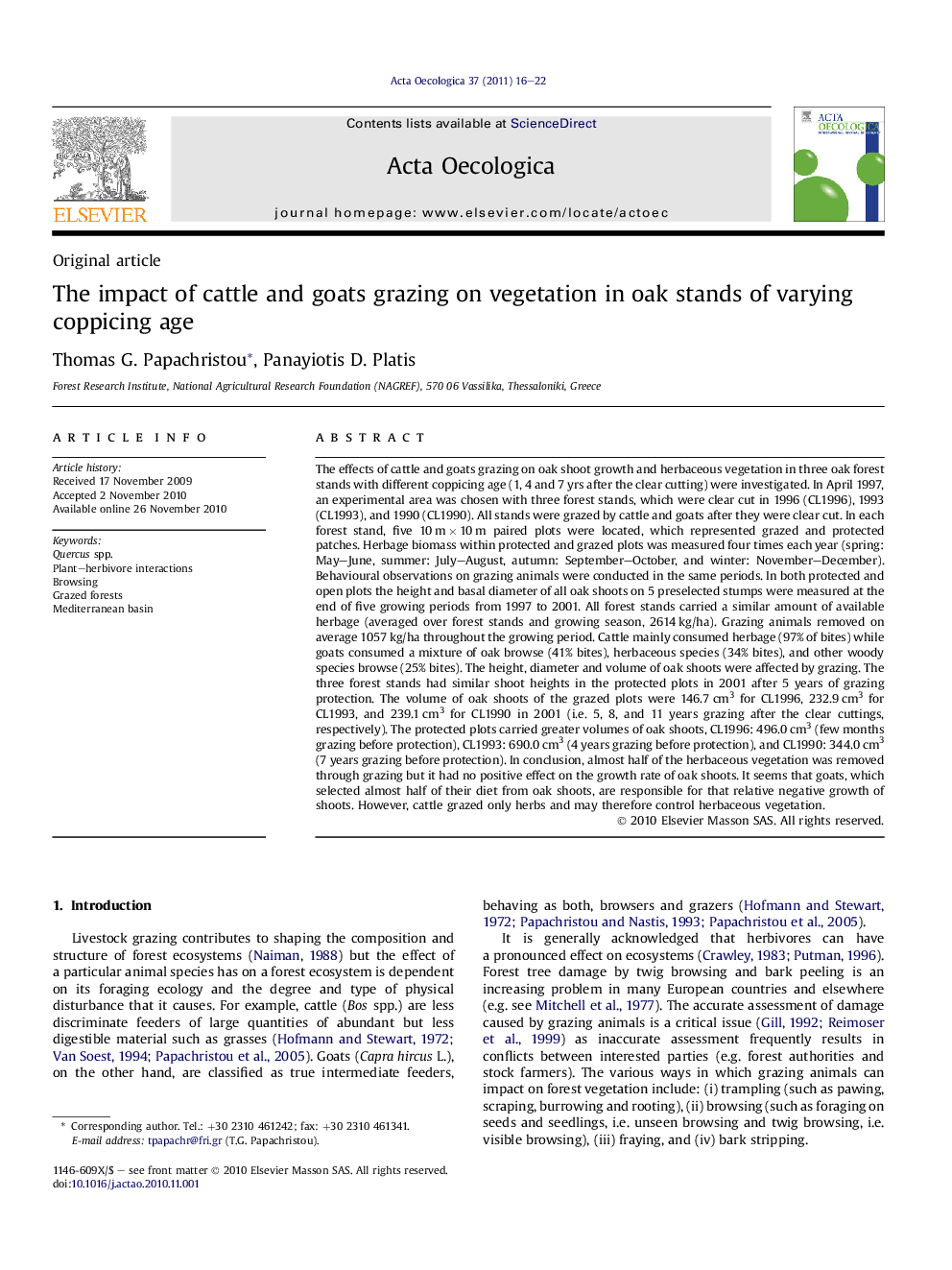| کد مقاله | کد نشریه | سال انتشار | مقاله انگلیسی | نسخه تمام متن |
|---|---|---|---|---|
| 6297409 | 1304076 | 2011 | 7 صفحه PDF | دانلود رایگان |

The effects of cattle and goats grazing on oak shoot growth and herbaceous vegetation in three oak forest stands with different coppicing age (1, 4 and 7 yrs after the clear cutting) were investigated. In April 1997, an experimental area was chosen with three forest stands, which were clear cut in 1996 (CL1996), 1993 (CL1993), and 1990 (CL1990). All stands were grazed by cattle and goats after they were clear cut. In each forest stand, five 10 m Ã 10 m paired plots were located, which represented grazed and protected patches. Herbage biomass within protected and grazed plots was measured four times each year (spring: May-June, summer: July-August, autumn: September-October, and winter: November-December). Behavioural observations on grazing animals were conducted in the same periods. In both protected and open plots the height and basal diameter of all oak shoots on 5 preselected stumps were measured at the end of five growing periods from 1997 to 2001. All forest stands carried a similar amount of available herbage (averaged over forest stands and growing season, 2614 kg/ha). Grazing animals removed on average 1057 kg/ha throughout the growing period. Cattle mainly consumed herbage (97% of bites) while goats consumed a mixture of oak browse (41% bites), herbaceous species (34% bites), and other woody species browse (25% bites). The height, diameter and volume of oak shoots were affected by grazing. The three forest stands had similar shoot heights in the protected plots in 2001 after 5 years of grazing protection. The volume of oak shoots of the grazed plots were 146.7 cm3 for CL1996, 232.9 cm3 for CL1993, and 239.1 cm3 for CL1990 in 2001 (i.e. 5, 8, and 11 years grazing after the clear cuttings, respectively). The protected plots carried greater volumes of oak shoots, CL1996: 496.0 cm3 (few months grazing before protection), CL1993: 690.0 cm3 (4 years grazing before protection), and CL1990: 344.0 cm3 (7 years grazing before protection). In conclusion, almost half of the herbaceous vegetation was removed through grazing but it had no positive effect on the growth rate of oak shoots. It seems that goats, which selected almost half of their diet from oak shoots, are responsible for that relative negative growth of shoots. However, cattle grazed only herbs and may therefore control herbaceous vegetation.
Research highlights⺠Cattle and goat grazing removes the half of the yearly herbage production in coppice oak forests. ⺠Cattle take the whole of their bites from herbage while goats from herbage (34%), oak shoots (41%) and other woody species (25%). ⺠Grazing depress the oak shoot growth and responsible for that are rather goats than cattle.
Journal: Acta Oecologica - Volume 37, Issue 1, JanuaryâFebruary 2011, Pages 16-22